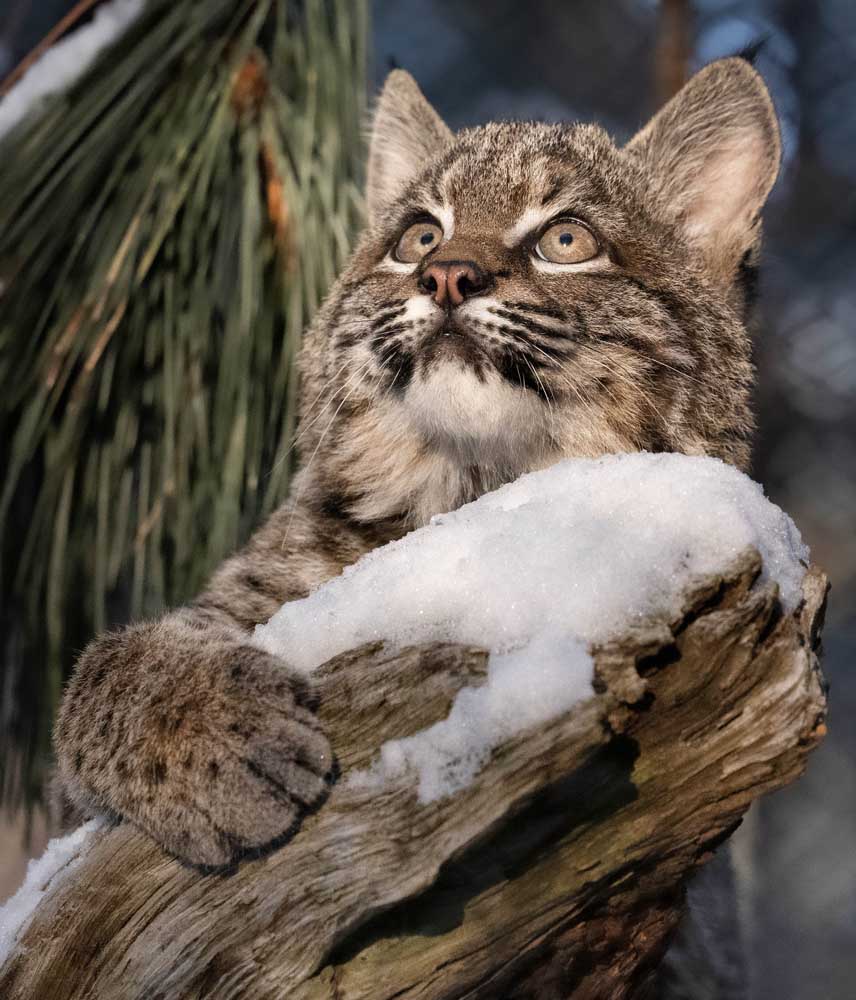A baby bobcat is living his best life at Bend’s High Desert Museum
Published 9:37 am Friday, April 21, 2023

- The unnamed bobcat at the High Desert Museum.
The unnamed 8-month-old bobcat that lives at Bend’s High Desert Museum trotted around in his enclosure off the museum’s lobby on Friday, and showed off for a small group of wide-eyed guests.
The bobcat kitten found near Portland has been living at the High Desert Museum since October, and the public now has the chance to periodically view him in the atrium where Gert the gray fox lives. He will not be in the enclosure at the same time as Gert, because the bobcat could be a potential predator of the gray fox, said Jon Nelson, the museum’s curator of wildlife.
Nelson said bobcats are native to Oregon and are common throughout the state. He said while there are many, bobcats aren’t easy to spot, so having one at the museum gives people a chance to learn about the elusive, solitary creatures.
“They are not an endangered species; there are lots of them out there,” Nelson said.
“But it is not one that people get to see very often. If you do see one in the wild, it is usually just a fleeting glimpse, so this is really good opportunity for people to get a good look at a bobcat and learn about them,” Nelson said.
Read more: The High Desert Museum’s newest otter gets a name
Nelson said the young bobcat is very active, and his favorite activity is batting around his food when it is hung up in a tree. He also likes to play with the food puzzles and toys placed in his enclosure by a team of wildlife experts, Nelson said. He also plays similar to how a house cat plays, Nelson said, but don’t let that fool you.
“He is absolutely a wild animal, and we are very careful in the way that we handle him. He is larger and much more powerful than a house cat. They definitely are not a pet. They are not something anybody would ever want to have as a pet. So, we treat him with the respect that he deserves,” Nelson said.
Nelson said the museum feeds the bobcat entire animals — such as rats, mice, rabbit, quail and other animals — to mimic his natural diet, but said his hunting instincts remain intact.
“We’ve had bobcats here in the past, and it is very common for them to catch the ground squirrels and the things that wander into the enclosure. We don’t have any control over that. But they have all the instincts you’d expect a wild cat to have,” Nelson said.
The kitten arrived at the museum in October and weighed less than 3 pounds. The cat was found by people near Portland who took him from the wild and brought him to the Oregon Department of Fish and Wildlife.
Fish and wildlife officials returned the kitten to where he was found with the hope that his mother would return. Animals like bobcats will often leave their young for a period of time to eat, and then return later, Nelson said. Six days later, another person brought the kitten back, and at this time it is unknown if the kitten was an orphan or was separated from its parents.
“There is no way to know exactly what happened, but it is pretty common for people to find baby animals and the best thing you can do is leave them there,” Nelson said. “If you are really concerned, call Oregon Department of Fish and Wildlife before you move the animal because it is very common for parents to leave their babies to go off and forage and do other things. They are coming back, and people just don’t understand that.”
Once fish and wildlife officials determined it was unsafe to return the kitten to the wild, he was brought to the High Desert Museum.
The kitten now weighs 15½ pounds and is thriving at the museum, and Nelson said it will take about a year or two for him to grow to his full size of about 20-25 pounds.
Nelson had an important message for the public regarding what to do with baby animals found in the wild.
“The best thing to do when discovering baby or injured wildlife is leave the animal there and contact the local ODFW office to report it,” Nelson said. “The best place for an animal is in the wild…If you care, leave it there.”
Nelson said he rarely goes into the enclosure with the bobcat as he could be potentially dangerous. However, he said, the kitten has never exhibited aggression toward any person.
Dana Whitelaw, the museum’s executive director, said, “Caring for young wildlife is work that requires total dedication, and once again our wildlife team has risen to the challenge to give the bobcat the best possible home.
“Although not generally a danger to humans, bobcats are also not house cats. Our team is working with him daily to ensure he will thrive here.”
The opportunity to name the kitten will be auctioned off on Aug. 26 at the High Desert Rendezvous annual fundraiser.






